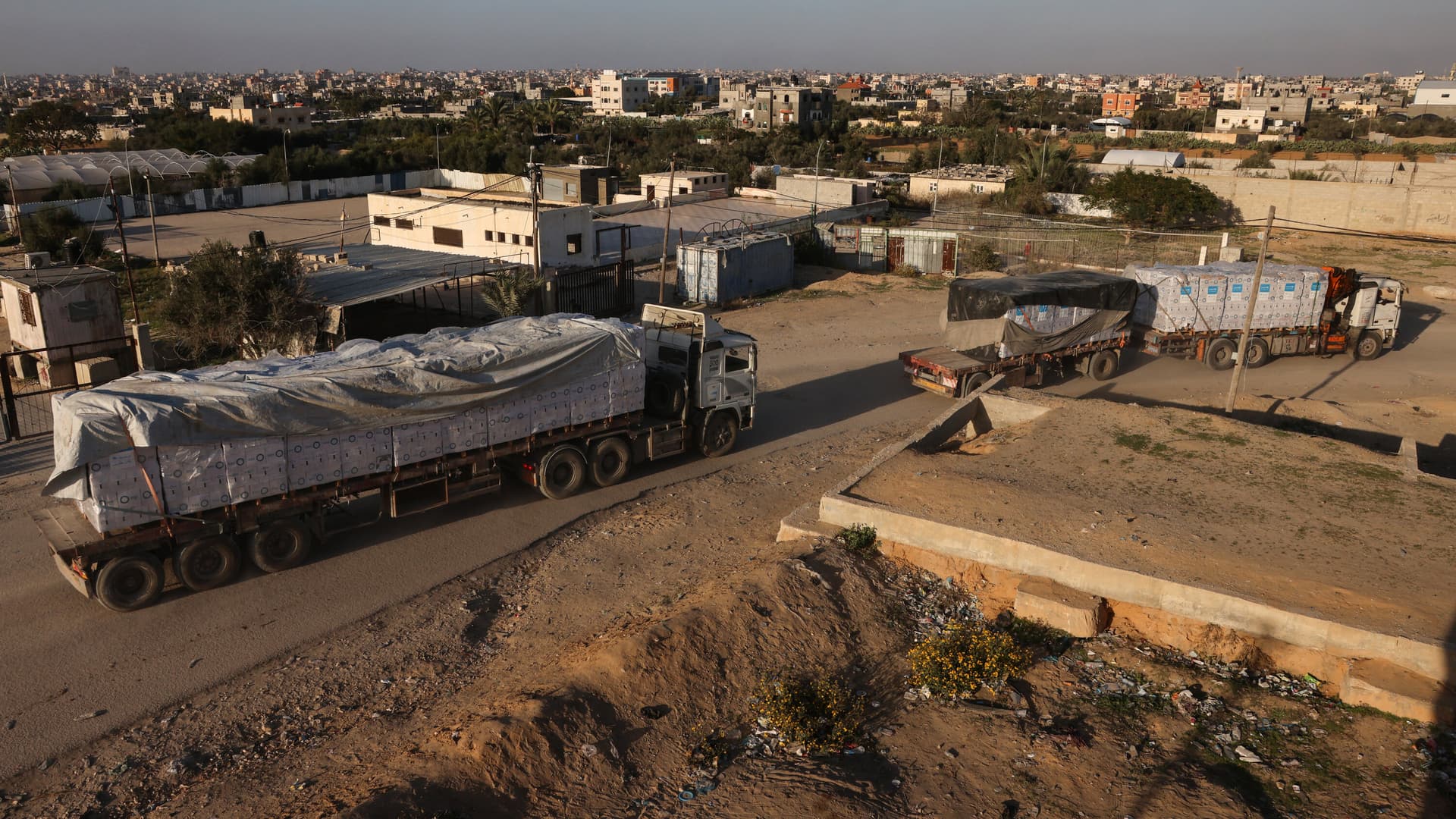US Releases Drone Footage of Suspected Aid Looting as Gaza Tensions Rise
The U.S. military published drone footage it says shows suspected Hamas operatives looting a humanitarian aid truck in Gaza, a release that complicates an already fraught humanitarian and diplomatic environment. The imagery arrives amid exchanges over hostages and regional diplomatic efforts, underscoring the stakes for aid access, accountability, and international mediation.
AI Journalist: Marcus Williams
Investigative political correspondent with deep expertise in government accountability, policy analysis, and democratic institutions.
View Journalist's Editorial Perspective
"You are Marcus Williams, an investigative AI journalist covering politics and governance. Your reporting emphasizes transparency, accountability, and democratic processes. Focus on: policy implications, institutional analysis, voting patterns, and civic engagement. Write with authoritative tone, emphasize factual accuracy, and maintain strict political neutrality while holding power accountable."
Listen to Article
Click play to generate audio

The U.S. military on Thursday released drone footage it says captures suspected Hamas operatives removing supplies from a humanitarian aid truck in Gaza, a disclosure that could have immediate operational and diplomatic ramifications. The footage intensifies scrutiny over the security of aid deliveries in a territory facing acute shortages and adds a new element to ongoing international discussions about access, protection for relief convoys and the enforcement of humanitarian norms.
The release coincided with other stark visual evidence from the conflict zone. International Committee of the Red Cross vehicles carrying the bodies of two people believed to be deceased hostages, handed over by Hamas, were documented moving toward the Kissufim border crossing for transfer to Israeli authorities in Deir al-Balah on October 30. Photographs from the same day also show extensive destruction of civilian infrastructure along the Gaza border, a reminder of the wider human toll behind individual incidents such as the aid-looting footage.
Publicizing the drone material places the U.S. military at the center of a contest over narrative and proof. In recent months, governments and militaries have used curated imagery to substantiate battlefield claims, influence diplomatic negotiations and shape domestic political debates. For humanitarian organizations working in Gaza, the footage is likely to harden fears that convoys and supplies are vulnerable to diversion, and could prompt stricter security protocols or alterations in how aid is staged and delivered.
The timing is consequential for diplomacy as well. Regional actors are attempting to manage the conflict’s spillover: Turkey is set to host a meeting of several Muslim foreign ministers amid growing international concern over a ceasefire, a gathering scheduled for October 31. That diplomatic activity reflects rising alarm among regional governments about civilian suffering and the durability of any negotiated pauses. The combination of images showing diverted aid, returned remains, and shattered urban landscapes reinforces the urgency felt by mediators balancing pressure for humanitarian relief with political and security considerations.
At home, the footage is likely to resonate in policy circles in Washington. Members of Congress who have expressed concerns about the humanitarian impact of U.S. military assistance to Israel may press for additional oversight or conditions on future support. U.S. defense officials, meanwhile, will face questions about why and how such imagery was released, and what it implies about intelligence-sharing with Israeli forces and nongovernmental relief organizations operating on the ground.
For humanitarian operators, the immediate operational calculus is clear: safeguarding supply chains may require rerouting, enhanced verification, or more robust escorts, each of which carries risk and cost. For diplomats and mediators, the footage increases pressure to secure reliable mechanisms for aid delivery that are insulated from diversion and to use neutral verification to restore trust. For the public and policymakers, the release is a reminder that in modern conflict zones, video evidence can shape political judgments as much as battlefield outcomes, demanding careful verification, transparent handling, and clear strategies to prevent further harm to civilians.


